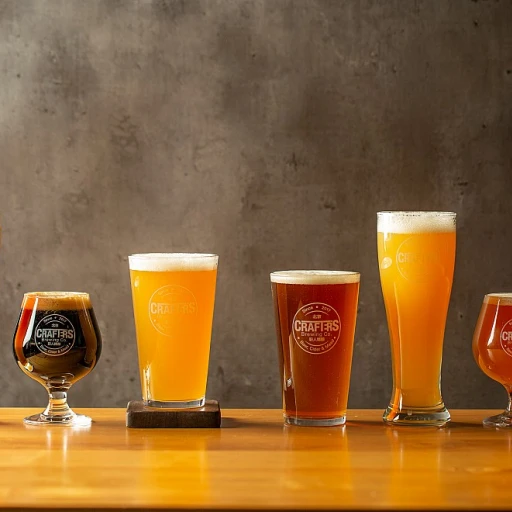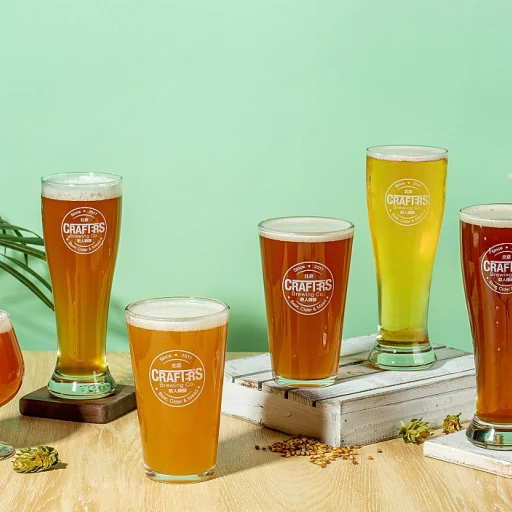
Weiss beer: a german wheat tradition
The roots of wheat beer in German brewing culture
Weiss beer, also known as weissbier or wheat beer, holds a special place in German brewing heritage. This style is defined by its use of malted wheat, which gives the beer its signature cloudy appearance and refreshing character. Originating in the southern regions of Germany, particularly Bavaria, weiss beer has been enjoyed for generations and remains a staple in beer gardens and festivals today.
What sets weiss beer apart is its unique brewing process and the traditions that surround it. Brewers use a significant proportion of wheat malt alongside barley, which not only influences the flavor but also the mouthfeel and appearance of the beer. The result is a beverage that is both lively and smooth, with a gentle effervescence and a creamy head.
Beyond its ingredients, weiss beer is deeply connected to German culture and social life. It is often served in tall, elegant glasses that showcase its hazy golden color and allow the aromas to develop. Whether enjoyed at a bustling beer hall or a quiet family gathering, weiss beer brings people together and celebrates the art of brewing.
If you're curious about the role of unmalted wheat in traditional German hefeweizen, this detailed guide on German hefeweizen with unmalted wheat offers fascinating insights into the brewing process and flavor profile.
Yeast, wheat, and the magic of fermentation
The role of yeast and wheat in weissbier
Weiss beer stands out thanks to its unique blend of ingredients and the magic that happens during fermentation. The core of this style is its high wheat content—usually at least half of the grain bill—which gives the beer its signature hazy appearance and soft, bready mouthfeel. But wheat alone doesn’t create the iconic flavors of weissbier.
- Yeast: Special strains of top-fermenting yeast are used, which produce the classic notes of banana, clove, and sometimes even bubblegum. These flavors aren’t added—they’re natural byproducts of fermentation, making each batch a little different.
- Fermentation: The process is typically done at warmer temperatures than lagers, encouraging the yeast to express those fruity and spicy aromas. This is where the real magic happens, transforming simple ingredients into a complex, refreshing beer.
- Wheat: The high wheat content not only affects the flavor but also contributes to the beer’s creamy head and lively carbonation, enhancing the overall drinking experience.
For a deeper look at how these elements come together in a classic example, check out this article on the Maisel's Weisse experience.
Understanding the interplay between yeast, wheat, and fermentation helps explain why weissbier is so distinctive. These factors also set the stage for the wide variety of styles you’ll find in the world of German wheat beers.
Weissbier styles: from hefeweizen to berliner weisse
Popular wheat beer varieties and what sets them apart
Weissbier, or wheat beer, is a broad family of beers with roots in German brewing tradition. Over time, several distinct styles have emerged, each with its own character and appeal. Here’s a closer look at some of the most beloved types you might encounter:
- Hefeweizen: The classic unfiltered wheat beer, hefeweizen is known for its cloudy appearance and lively flavors. Expect notes of banana and clove, a result of the special yeast strains used in fermentation. It’s refreshing, with a soft mouthfeel and moderate carbonation.
- Kristallweizen: This style is essentially a filtered version of hefeweizen. By removing the yeast and wheat proteins, kristallweizen appears clear and bright. The flavor profile is similar, but the texture is lighter and the finish crisper.
- Dunkelweizen: For those who enjoy richer flavors, dunkelweizen offers a darker, maltier take on wheat beer. Expect hints of caramel, bread, and sometimes chocolate, balanced by the familiar fruity and spicy yeast character.
- Weizenbock: This strong wheat beer combines the fruity, spicy notes of weissbier with the depth and strength of a bock. It’s fuller-bodied and often enjoyed in cooler weather.
- Berliner Weisse: A tart, low-alcohol wheat beer from Berlin, this style is prized for its refreshing acidity. Traditionally, it’s served with a shot of flavored syrup to balance the sourness.
Each of these styles highlights the versatility of wheat as a brewing ingredient and the creativity of brewers. If you’re interested in how wheat beers compare to other popular brews, you might enjoy this article on Heineken nutrition facts for a broader perspective on beer styles and what goes into your glass.
Tasting weiss beer: what to expect
Flavors and aromas to expect
Weiss beer is known for its unique flavor profile, shaped by the wheat malt and special yeast strains used in brewing. When you pour a glass, you’ll notice a hazy, golden appearance and a thick, creamy head. The aroma is often a mix of banana and clove, with hints of bubblegum or vanilla, depending on the yeast.Texture and mouthfeel
A sip of weiss beer feels smooth and lively. The wheat gives it a soft, full body, while the high carbonation adds a refreshing, tingling sensation. This makes it especially enjoyable on warm days or as a palate cleanser.Serving tips for the best experience
- Serve in a tall, curved glass to showcase the color and allow the aromas to develop.
- Pour gently, leaving a little beer in the bottle, then swirl and add the rest to release the yeast sediment for extra flavor.
- Enjoy at a cool, not icy, temperature to let the subtle notes shine.
What makes tasting weiss beer special?
Every sip brings together the traditions of German brewing and the magic of fermentation. Whether you’re new to wheat beers or a longtime fan, tasting weiss beer is about enjoying its balance of fruity, spicy, and refreshing qualities. It’s a style that invites you to slow down and savor each glass.Pairing and personal stories: enjoying weiss beer at home
Bringing weissbier to your table
Enjoying weiss beer at home is a delightful experience that goes beyond just pouring a glass. The refreshing, slightly fruity flavors and creamy mouthfeel make it a versatile companion for many dishes and occasions. Here are some ideas to help you make the most of your weissbier moments:
- Food pairings: Weissbier pairs beautifully with light salads, grilled chicken, seafood, and even spicy dishes. Its effervescence and subtle banana and clove notes complement both savory and mildly sweet flavors.
- Cheese and charcuterie: Try it with soft cheeses like brie or camembert, or with mild sausages. The beer’s carbonation cuts through the richness, balancing each bite.
- Brunch favorite: Serve weissbier with classic brunch fare such as eggs benedict, smoked salmon, or fresh fruit. Its lively profile brightens up the meal and adds a festive touch.
Personal weissbier moments
Many beer lovers have fond memories of sharing a cold weissbier with friends on a sunny afternoon or introducing family to its unique flavors during a meal. Whether you are savoring a traditional hefeweizen or exploring a tangy berliner weisse, the experience is often about connection and enjoyment. Don’t hesitate to experiment with glassware and serving temperatures to find what suits your taste best. The world of weissbier is welcoming and full of possibilities for both seasoned enthusiasts and newcomers alike.













